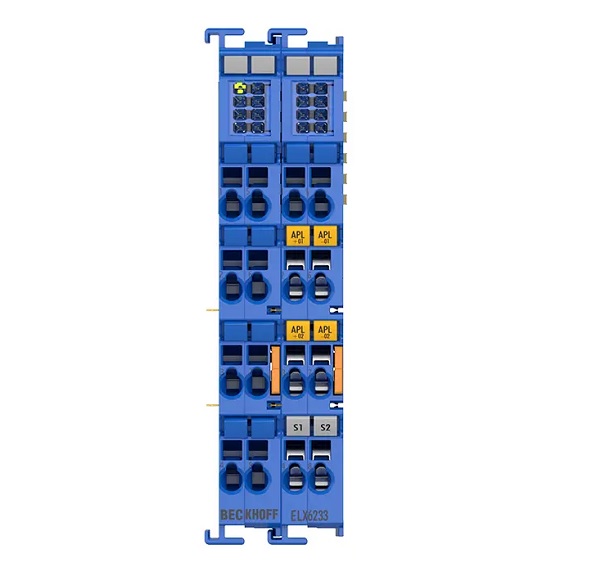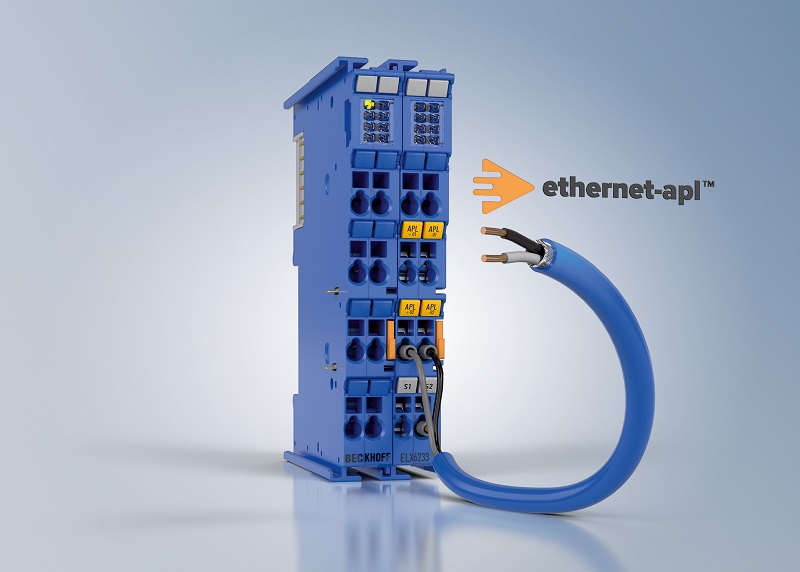Beckhoff Releases a New Ethernet-APL Module for Advanced Communication
Beckhoff has introduced a new Ethernet-APL module allowing process automation engineers to acquire data faster and at further distances with greater protection against hazardous environments.
Ethernet has come a long way over the last 50 years (conceptually developed back in 1973), and more data is being transferred using Ethernet than ever before. A large reason for this shift in the amount of data transfer is Industry 4.0 and the requirement from factories and process automation plants to collect, store, and monitor data from as many sensors or processes as possible.
Ethernet Advanced Physical Layer (APL)
Ethernet-APL is a revision of the communication technology that makes use of the single-pair Ethernet and can transmit data up to 10 Mbit/s over 1000 meters. This technology can also be used in hazardous locations, making it a great tool to use for remote applications in the energy sector and anywhere that explosion-proof equipment is required.

Networking equipment is absolutely vital for the operation of industrial processes. Image used courtesy of Adobe Stock
Beckhoff’s ELX6233 Ethernet-APL Module
Beckhoff is adding to its extensive line of remote terminal interfaces for EtherCAT networks. The ELX6233 is a two-channel interface card for the EtherCAT remote I/O modules. The ELX6233 allows for direct connection of Ethernet-APL-enabled sensors, this terminal also allows for discreet I/O and other communication modules to be integrated all in the same EtherCAT network.
The Ethernet-APL network makes use of common industrial protocols for standard integration but provides a layer of physical connection for ease of integration in industrial and hazardous environments. The new module can withstand a temperature range of -25°C + 60°C and makes use of the internal 24VDC power supply.

The Beckhoff ELX6233 Ethernet-APL communication module. Image used courtesy of Beckhoff Automation
Because Ethernet-APL uses only a single pair of conductors for communications up to 1km, the module takes up only one slice for two channels. With many process automation industries being in hazardous areas, it is important that industrial networks be safe to use in hazardous zones, and the ELX6233 is rated to be used in 0/20 or 1/21 hazardous zones. Switches designed into the input and output connectors prevent any hazardous current from traveling in the wires until connections are established, preventing the chance of arcing and explosions.
Applications of Ethernet-APL
Process automation typically involves large installations spanning hundreds of feet. It can also involve smaller installations that might fit in a medium-sized room. Because of this flexibility, you want to make sure the technology you choose to transmit important data is capable of high speeds, is safe, and can support long distances. Ethernet-APL can meet all of these requirements and only uses two conductors.

Beckhoff’s ELX6233. Image courtesy of Beckhoff
Beckhoff recognizes the capability of this technology and has jumped at the opportunity to include a terminal module for their flagship remote I/O product. The ELX6233 can be added to any equipment that requires sensor data from a long distance, and sensor manufacturers are releasing products that make use of this technology, such as flow meters or temperature sensors. A SCADA system monitors sensors from all over the processing plant. Sensor information is sometimes sent to RTU (remote terminal units) and then sent to the SCADA control system. With the ELX6233, you could send the data directly to the SCADA controller and bypass the need for additional equipment.
Even for existing systems, implementing newer technology can sometimes reduce the overall cost of the equipment and a faster return on investment.

 Facebook
Facebook Google
Google GitHub
GitHub Linkedin
Linkedin








